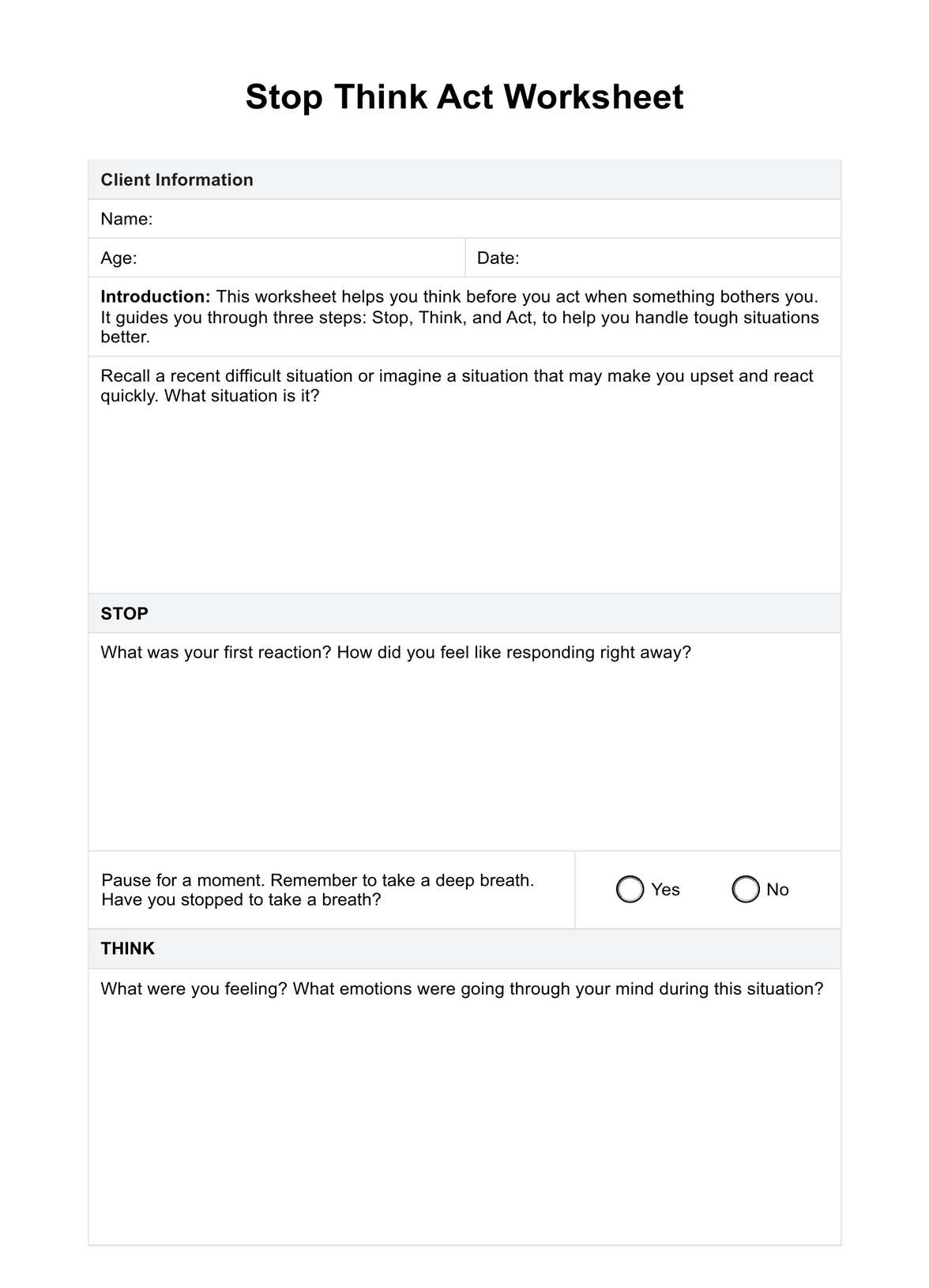Stop-think-act is a strategy used to manage reactions by pausing to consider one's feelings and options before taking action, especially in emotionally charged situations.

Stop Think Act Worksheet
Empower your clients with our Stop-Think-Act Worksheet, designed to enhance emotional regulation and thoughtful decision-making in challenging situations.
Use Template
Stop Think Act Worksheet Template
Commonly asked questions
The purpose of stop-think-act is to foster better decision-making and emotional regulation by encouraging thoughtful responses instead of impulsive reactions.
You can help students learn stop-and-think by guiding them through recognizing emotional triggers, evaluating their feelings and thoughts, and choosing rational responses before acting.
EHR and practice management software
Get started for free
*No credit card required
Free
$0/usd
Unlimited clients
Telehealth
1GB of storage
Client portal text
Automated billing and online payments











